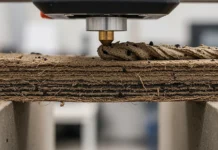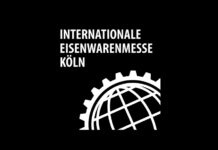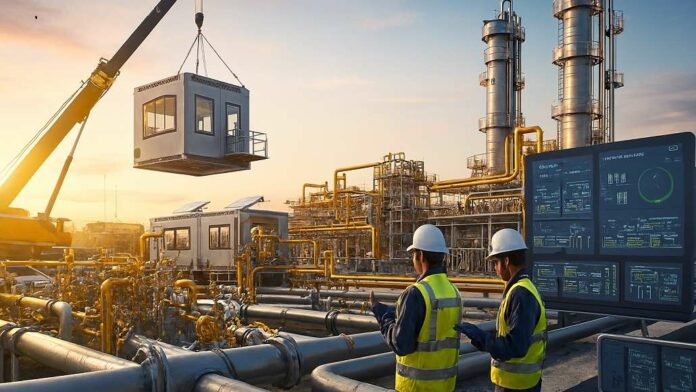In a sector where margins are thin and the stakes are high, oil and gas companies cannot afford operational drag. Equipment failures, process delays, and regulatory setbacks cut directly into profitability. In this case, efficiency is more than a performance goal, it is a survival strategy. This is where engineering services become indispensable. Fortunately, PLC Construction services can help convert capital-intensive projects into safe, profitable, precision-built systems.
Oil and gas engineering services integrate mechanical, civil, electrical, and process disciplines into a cohesive framework that reduces waste, minimizes downtime, and improves output across the asset lifecycle.
Strategic Planning Backed by Feasibility Intelligence
Efficiency begins with the decisions made before construction starts. Engineering teams analyze geological data, infrastructure accessibility, and market conditions to identify the most viable path forward. They run simulations to compare alternatives, test sensitivity to external variables, and build in flexibility for long-term operations.
These early insights reduce the likelihood of costly mid-project changes. A project built on validated assumptions reaches milestones faster and stays on budget. Every upstream or downstream component benefits from a smarter foundation.
Engineering Design Optimized for Energy Projects
Detailed engineering design lays the foundation for any oil and gas development. This includes piping and instrumentation diagrams (P&IDs), structural blueprints, HVAC layouts, and electrical systems that must work seamlessly under intense operational pressure.
Firms with oil and gas expertise apply industry-specific standards like ASME, API, and IEC from the early stages. Designs are optimized for fluid handling, corrosion resistance, pressure balancing, and long-term maintenance access. Simulation tools allow engineers to stress-test critical components before they ever reach the site. This front-loaded planning prevents expensive retrofits or safety incidents later in the build.
In addition, modularization and pre-assembly strategies are gaining traction. These allow components to be built in controlled environments off-site, reducing field assembly costs and improving quality assurance.
Seamless Integration of Mechanical and Process Systems
In complex facilities, poor coordination between mechanical and process systems leads to bottlenecks. Engineering services ensure these disciplines work together from day one.
Process engineers develop thermal and fluid flow models, while mechanical teams adapt these into real-world constraints like space, load-bearing limits, and access for maintenance. The result is a system that runs cleanly, safely, and with minimal intervention.
This collaboration improves start-up success rates and long-term system stability. Operators deal with fewer issues related to overheating, surging, or equipment misalignment.
Precision in Electrical and Instrumentation Engineering
Facilities that waste energy are inefficient by design. Electrical engineers reduce this waste by designing load-balanced power networks, automating shutdowns, and integrating variable frequency drives. They perform load flow and short-circuit analyses to ensure systems remain operational under stress.
Instrumentation engineers go further, introducing sensor arrays and control loops that enable real-time monitoring. This data informs predictive maintenance and performance optimization, giving companies a tighter grip on resource use.
Proper E&I engineering shrinks unplanned downtime, improves worker safety, and allows remote performance tuning without stopping production.
Flow Assurance for Reliable Transport
Moving hydrocarbons efficiently across long distances is no simple task. Fluids can change temperature, pressure, and composition inside the pipe, leading to hydrate formation or wax buildup. Flow assurance engineers simulate these behaviors and design mitigation strategies.
They recommend insulation, pressure control systems, and chemical injections that prevent flow disruptions. Every mitigation technique is modeled before installation to ensure the best return on investment.
This keeps flow rates steady, prevents shutdowns, and reduces the need for intrusive pigging or cleaning operations. For operators, it means stable revenue and fewer maintenance headaches.
Modular Construction for Faster Deployment
Engineering services increasingly leverage modular construction techniques. Instead of building everything on-site, components are prefabricated and tested in a controlled environment. They arrive ready to install, with connections and instrumentation already in place.
This cuts field labor costs, reduces weather delays, and improves safety performance. Projects that once required 36 months can now be completed in 24 or fewer. Modular construction also simplifies decommissioning or relocation if demand shifts.
Efficiency is not only about runtime, it is about time-to-revenue. Engineering services help significantly reduce that interval.
Streamlined Regulatory and Environmental Compliance
Delays caused by noncompliance cost more than fines. They disrupt cash flow, damage reputation, and cause investor uncertainty. Engineering firms build regulatory alignment into the project workflow.
They ensure that material specifications meet regional standards, noise levels fall within approved ranges, and flare volumes are accurately tracked. Permits are filed on time, and stakeholder concerns are addressed through proper design.
This proactive approach eliminates rework and project hold-ups. It also positions companies to qualify for ESG-focused financing or incentives.
Commissioning and Handover Without Friction
Even the best design fails without proper commissioning. Engineering teams oversee functional testing, loop calibration, and emergency response simulations. Any mismatch between design intent and field reality is corrected before operations begin.
By handing over assets that are fully tuned and documented, engineering firms save operators from years of retrofits and guesswork. It allows crews to focus on running the plant rather than troubleshooting it..
Maintenance Planning That Avoids Downtime
Downtime is the enemy of efficiency. Maintenance engineering provides a roadmap for keeping systems in peak condition with minimal disruption. Teams design inspection routines, specify replacement intervals, and prioritize assets based on risk and criticality.
Technologies like digital twins and thermal imaging are integrated into the maintenance strategy. These tools flag developing issues before they cause failure. Engineering services also optimize spare parts inventory and vendor contracts to support rapid response.
This leads to higher uptime, longer asset life, and lower maintenance costs per unit of output.
Data-Driven Optimization Across the Asset Lifecycle
Once facilities are operational, engineering services shift to performance optimization. They analyze real-time data against original models, adjusting setpoints and controls for better throughput. They identify underperforming components and re-engineer process steps for greater efficiency.
This continuous improvement mindset turns static infrastructure into adaptable platforms. Engineers can recommend modifications that extend capacity or reduce emissions, all without needing a complete redesign.
Long after construction ends, engineering services continue to deliver value, improving every aspect of output, safety, and cost control.































